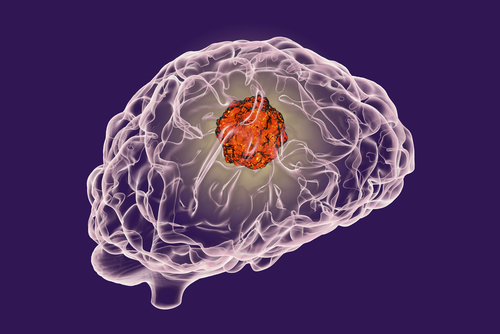A planned safety review of a Phase 2 trial evaluating MDNA55 to treat glioblastoma has shown that the drug, developed by Medicenna Therapeutics is safe to deliver precisely into a patient’s tumor, avoiding exposure to the rest of the body.
This supports continuing the trial, said Dr. John H. Sampson of Duke University Medical Center’s Department of Neurosurgery.
Sampson presented a poster, “Real time, image guided high flow CED in recurrent glioblastoma (rGBM); initial experience from phase 2 study of a targeted immunotherapy, MDNA55 (cpIL-4PE),” at the 2017 Congress of Neurological Surgeons.
“Drug delivery to the brain has been a challenge and these initial data are a significant advance in our attempt to safely and efficiently deliver our targeted cancer immunotherapy agent MDNA55,” Dr. Martin Bexon, Medicenna’s head of clinical development, said in a press release. “Our initial experience has shown that it is possible to accurately deliver the volumes at high flow rates necessary for distribution of MDNA55 in and around the tumor. This was achieved with a reassuring safety profile, such that our safety committee recommended continuation of the study.”
The interleukin-4 receptor (IL-4R) is highly expressed in multiple tumor types — including 76 percent of glioblastomas — spurring tumor growth. IL-4R is also present in immunosuppressive cells within the tumor microenvironment, and in cancer stem cells. Because normal brain tissue does not express this receptor, IL-4R is an attractive target for new cancer therapies.
MDNA55 is a fusion protein that combines the structure of interleukin-4 (IL-4) with a toxic payload. The drug’s specificity ensures that only cells expressing the IL-4R will be targeted and killed.
In an attempt to bypass the blood brain barrier, the Phase 2 trial administers MDNA55 locally by intratumoral infusion, using a technique called Convection Enhanced Delivery (CED).
The approach requires the placement of a catheter into a patient’s brain, and maximizes tumor exposure while avoiding exposure to healthy tissues in the rest of the body.
The study (NCT02858895) is evaluating the safety of MDNA55 and the efficacy of the CED delivery method to treat adult glioblastoma patients whose tumor recurred or progressed after surgery and radiation therapy. Researchers expect to enroll 52 participants at nine U.S. clinical centers.
CED’s safety and efficacy has already been reviewed in the first 10 patients, whose tumors ranged from 1.8 to 4.3 centimeters in diameter. CED delivered MDNA55 to between 43 and 100 percent of the cancer tissue. In 70 percent of cases, it also covered 1 cm of the surrounding brain tissue; in 40 percent, it covered 2 cm.
“Our initial analyses show a substantially higher proportion of the target tissue being covered than in previous similar trials,” said Sampson. “In some cases, close to 100 percent of the tumor and the 1 cm margin around it (at risk for tumor spread) has been successfully covered.”
Researchers reported no adverse events related to the MDNA55 infusion, and only two mild to moderate treatment-related adverse events.


